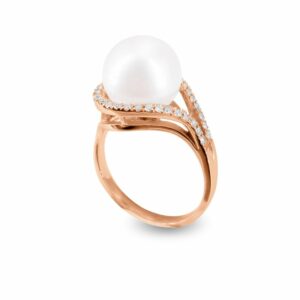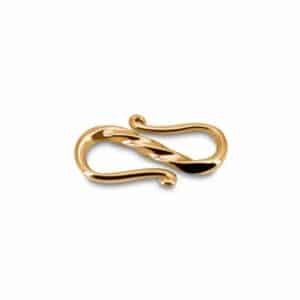There are a lot of questions that go into making jewelry – what kind of metal to use, what type of stones to use, how to create a design – and finding the right answers can be crucial in producing beautiful pieces. In this blog post, we’ll be tackling one specific part of jewelry making: findings. What are findings? What types are there? And how do you use them? Read on to find out!
What are jewelry findings and what do they do?
Jewelry findings are the small components used to create jewelry. They include things like clasps, jump rings, and ear wires. Findings come in a wide range of styles and materials, from delicate gold to rugged silver.
While some findings are purely decorative, others serve an important function in keeping jewelry securely fastened. Whether you’re a beginner jewelry maker or a seasoned pro, having a good selection of findings on hand is essential for creating beautiful, long-lasting jewelry.
The different types of jewelry findings
There are many different types of jewelry findings available, each with its own purpose and function. The most common types of findings include jump rings, clasps, pins, and ear wires.
- Jump Rings
Jump rings are small metal rings that are used to connect two jewelry components together. They can be opened and closed, which makes them very versatile. Jump rings are typically made from copper, brass, sterling silver and gold
- Clasps
Clasps are used to secure jewelry in place. There are many different types of clasps available, including lobster claw clasps, spring ring clasps, and toggle clasps. Pins are thin metal rods that are used to attach jewelry components to clothing. They can also be used to fasten two pieces of fabric together.
- Ear Wires
Ear wires are designed to go through the piercing in your earlobe. They typically have a small loop on one end that helps keep the earring in place. Ear wires are usually made from sterling silver or gold-filled wire.
These are just a few of the many different types of jewelry findings available. With so many options to choose from, you can find the perfect finding for any jewelry project.
How to use jewelry findings in your own jewelry designs
Jewelry findings can be made from a variety of materials, including metals, plastics, and glass. When choosing jewelry findings for your own designs, it is important to consider the overall aesthetic you are trying to achieve.
For example, if you are creating a vintage-inspired piece, antique-style jewelry findings would be a good choice. In addition to appearance, it is also important to consider the strength and durability of the jewelry finding, as well as how easy it is to use.
Once you have chosen the right jewelry findings for your project, you can start assembling your piece using pliers and other tools. With a little practice, you will be able to create beautiful jewelry designs that are uniquely your own.
Where to find high-quality jewelry findings
Jewelry findings are essential components in the jewelry-making process, and it is important to use high-quality findings to ensure your jewelry is well-made and looks beautiful. There are a few different ways to find high quality jewelry findings. One option is to purchase them from a specialized jewelry supply store. These stores typically carry a wide range of findings in different materials and styles, so you can find exactly what you need. Another option is to purchase your findings online from a reputable jewelry supply website. This can be a great way to get access to a wider selection of findings than you would find in a brick-and-mortar store, and you can often find lower prices as well. Whichever route you choose, make sure to do your research to ensure you are getting high-quality jewelry findings.
How to care for your jewelry findings
Caring for your jewelry findings is important to keep them looking their best. Here are a few tips:
- Store jewelry findings in a clean and dry place. A jewelry box or pouch is ideal.
- Avoid exposure to water, chemicals, or other harsh substances.
- Gently clean jewelry findings with a soft cloth. A jewelry cleaner can be used for deeper cleaning, but be sure to follow the manufacturer’s instructions.
- Inspect jewelry findings regularly for signs of damage or wear. Replace any damaged or worn components as soon as possible.
By following these simple care tips, you can keep your jewelry findings looking like new.
Tips for working with jewelry findings
- Consider the weight of the jewelry piece. Heavier pieces will need sturdier findings, while lighter pieces can use more delicate findings.
- Think about the design of the jewelry piece. Does it have a clean and simple look? Or is it more elaborate? Findings should complement the overall design of the piece.
- Choose findings that match the metal of the jewelry piece. You don’t want silver findings on a gold necklace, for example.
- Be sure to check the quality of the findings before you purchase them. Poorly made findings are more likely to break or come apart, which can be frustrating (and even dangerous) for jewelry makers and wearers alike.
By following these tips, you can be sure to choose jewelry findings that are right for your project. With high-quality findings in place, your jewelry piece will be beautiful and long-lasting.
A world-leading manufacturer of gold pearl jewelry, KONIG Jewelry is renowned for its innovative and elegant custom pearl clasp designs, leading to its reputation as “The Clasp Source”. KONIG is a family-owned business established in 1986 that produces all its jewelry at its headquarters in Israel, using a blend of traditional and modern techniques to deliver uncompromising quality.
Collaborate on a custom order or browse the full catalog of findings and parts, as well as finished jewelry >> https://konigjewelry.com/



